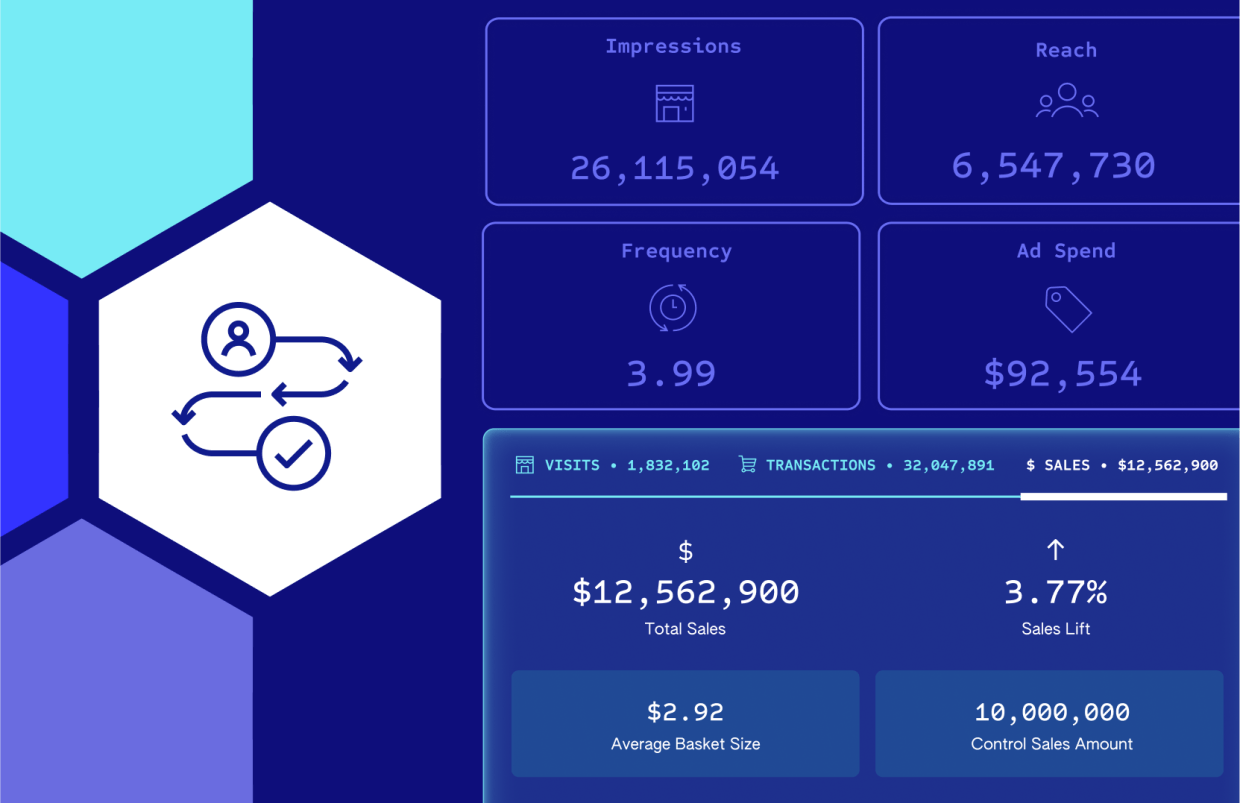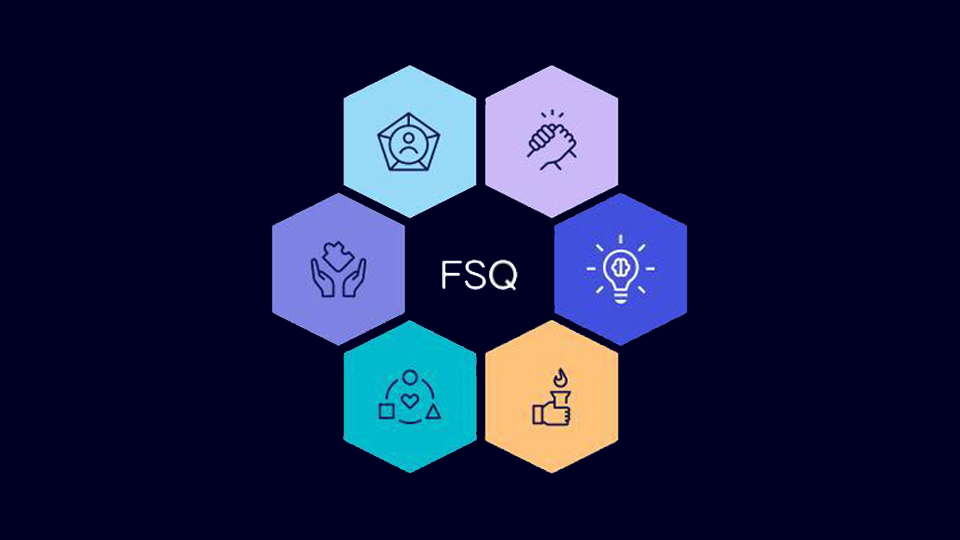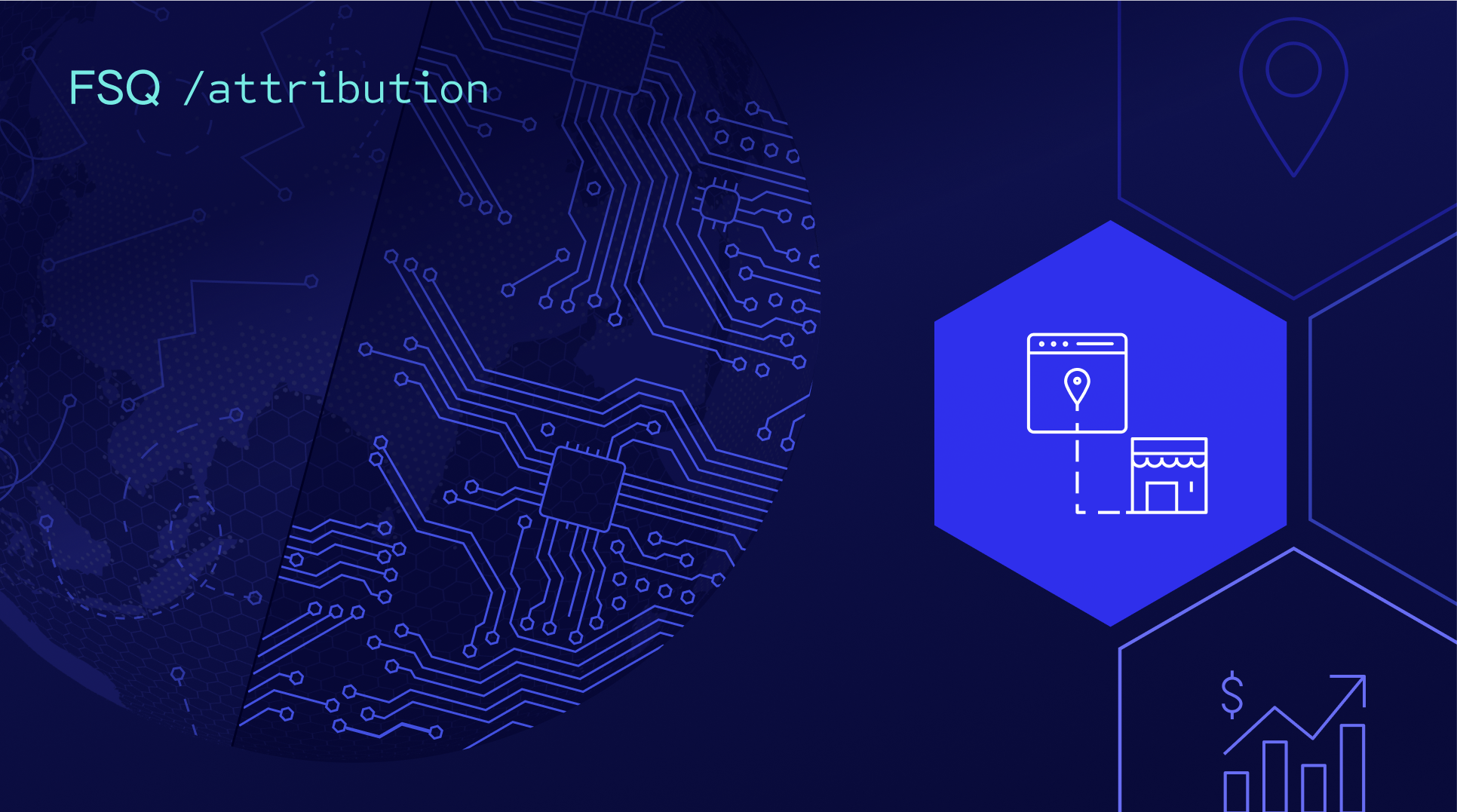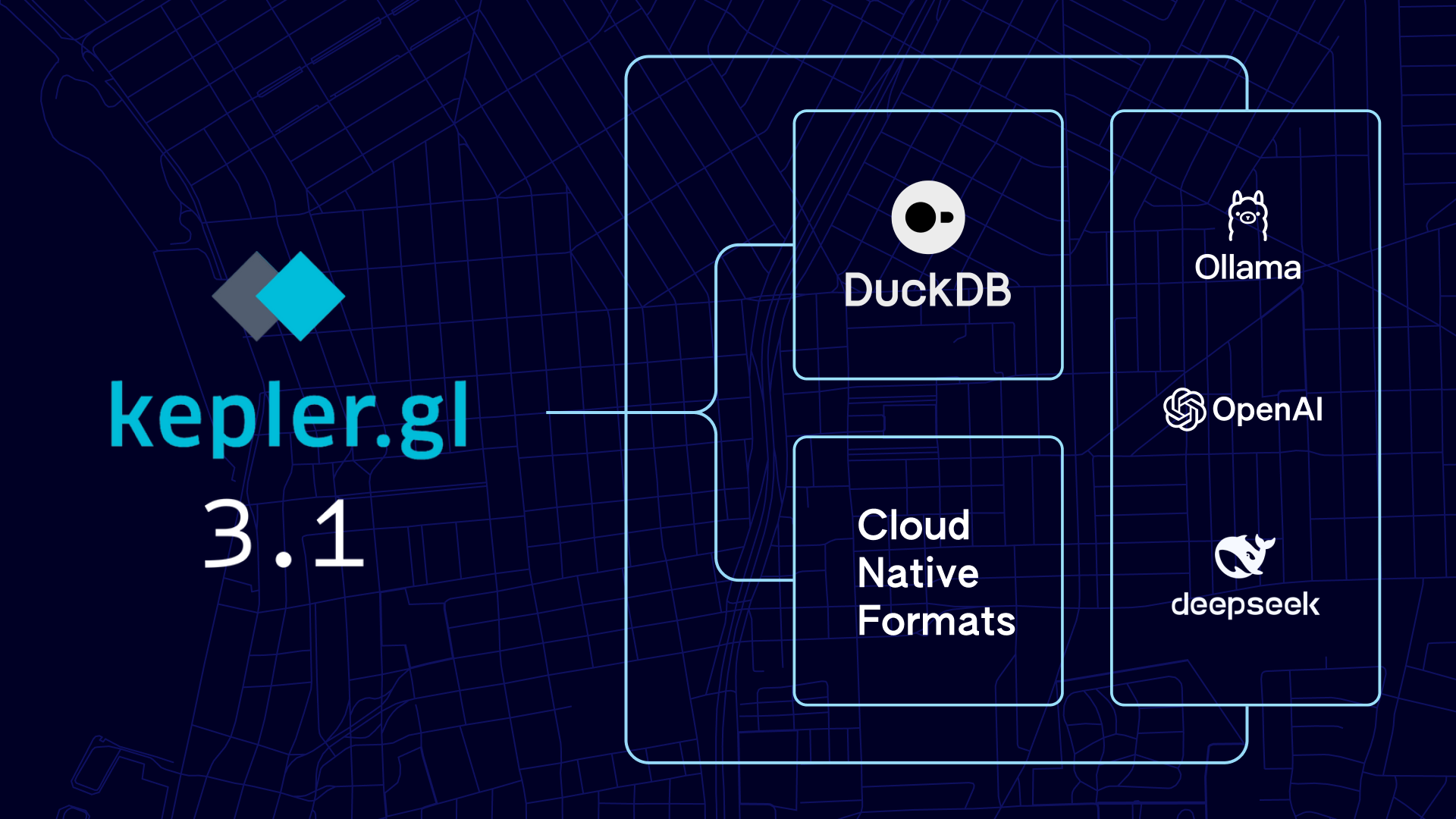Navigating the complex world of consumer behavior
In today’s hyper-connected world, brands have an unprecedented level of access to consumers. Social media, digital platforms, billboards, TV and podcasts allow brands to interact with consumers across multiple channels while providing a seamless engagement experience. From hearing an ad during a podcast, to browsing a website, to passing by a store location, to being emailed a coupon, and ultimately making a purchase, the customer journey is filled with opportunities for brands to influence consumers.
However, it can be challenging for marketers to identify and take advantage of the opportunities along a path to purchase. As consumer preferences and behavior rapidly change, brands must continuously evolve their advertising strategies and marketing activations to ensure they are reaching the right people, at the right place, at the right time, with the right message. This can be tricky given the many options consumers have for making a purchase: online, in-store, buying online and picking up in-store, etc. While more technology than ever before exists to help marketers navigate these complexities–such as multi-touch attribution, which measures the impact of advertising on foot traffic–these solutions are most effective when coupled with a thorough understanding of the customer journey.
Understanding the customer journey
Each stage in the customer journey represents a unique phase in the consumer’s interaction with a brand and requires tailored marketing activation strategies to effectively guide consumers from one phase to the next. While each brand’s customer journey may look a little different, they generally encompass the following critical stages in a consumer’s path to purchase:
#1. Awareness
Awareness is the initial stage where potential customers first encounter a brand. At this point, the goal is to capture attention and generate interest. Brands employ various tactics such as social media campaigns, influencer partnerships, search engine optimization (SEO), and online advertisements to increase visibility. Content marketing plays a vital role here, offering valuable and engaging content that resonates with the target audience. The effectiveness of this stage is typically measured by reach and engagement metrics, indicating how well the brand is making an impression on potential customers.
#2. Consideration
Consideration follows awareness and involves deeper engagement as consumers evaluate the brand’s offerings. During this stage, consumers compare products or services, read reviews, seek recommendations, and consume detailed content such as blogs, videos, and user guides that provide comprehensive information and emphasize the brand’s unique value propositions. Retargeting ads, email marketing, and personalized content can effectively nurture leads through this phase. The focus here is on building trust and addressing any potential concerns, positioning the brand as a credible and preferred choice. Common success metrics for this stage include engagement stats on content designed specifically to guide potential customers from awareness to conversion.
#3. Conversion
Conversion is the critical juncture where interest turns into action, culminating in a purchase decision. This stage demands a seamless and persuasive experience. Promotional offers, limited-time discounts, and customer testimonials often incentivize the final decision. E-commerce sites must ensure user-friendly navigation, secure payment options, and clear calls-to-action, while abandoned cart reminders and follow-up emails also help in converting hesitant online prospects. Similarly, brick-and-mortar stores must foster purchase-friendly environments with optimized store layouts, positive staff interactions, and convenient checkout options. The success of this stage is measured by conversion rates and sales metrics, indicating how effectively the brand can turn interest into revenue.
#4. Loyalty
Loyalty is the final and ongoing phase of the customer journey, focusing on retaining customers and fostering long-term relationships. Post-purchase engagement is crucial, involving activities like personalized follow-up emails, loyalty programs, and exclusive offers for repeat customers. Providing exceptional customer service and gathering feedback for continuous improvement are also key. Additionally, brands often leverage social media and community-building efforts to maintain engagement and encourage advocacy. Measuring customer retention rates, repeat purchase behavior, and net promoter scores (NPS) helps assess the effectiveness of loyalty strategies.
The customer journey is ultimately a cycle in which converted customers are continuously nurtured throughout the loyalty stage to maintain and increase brand awareness and influence them to consider and make more purchases.
Differentiating between phases in the customer journey
Although these stages might seem straightforward, identifying when consumers are in each stage and the influence that stage has on the overall path to purchase is much more complex. Fortunately, differentiating between the customer journey phases is becoming more streamlined thanks to advancements in marketing technology, such as multi-touch attribution.
Measuring media engagement and exposure
One of the biggest opportunities for brands to increase consumer exposure and engagement is through strategic media campaigns. From billboard ads, to influencer marketing, to commercials on streaming services and everything in between, there is an unprecedented opportunity for brands to reach consumers through media today. Research shows that American consumers spend about eight hours a day engaging with digital media, and physical advertising is also considered a powerful touchpoint along the customer journey.
Optimizing media exposure and engagement throughout each phase of the consumer journey is critical for brands seeking to increase conversions among both new and existing customers, and forms the basis of a strong omnichannel marketing strategy. However, marketers must keep two things in mind when leveraging media. First, media messaging, timing, and location must be tailored to specific steps in the customer journey, as consumers have varying levels of interest, knowledge, and purchase intent depending on their relationship with the brand. For example, a physical ad inside a subway car could effectively build awareness among consumers on their daily commute. Subsequently, a digital display ad can help with brand recall for consumers as they move into the consideration stage and start to investigate similar products online. The messaging of these two ads should reflect this shift and meet the consumer where they are along their path to purchase.
Second, marketers should have clear methodologies for scoring media exposure and engagement. Enhancements in measurement have made it possible for brands to develop sophisticated multi-touch and multi-channel attribution strategies that weigh consumer engagements throughout the customer journey according to their overall influence on conversions or purchase decisions. For instance, foot traffic data can reveal how many people visited a brand’s brick-and-mortar store, while purchase data provides insight into actual buying behavior; both of these datasets can be used to inform attribution measurement and determine how effective an ad was in driving visits and conversions. However, most attribution measurement solutions are retrospective, requiring marketers to analyze past consumer engagements and behaviors in order to optimize future marketing activations, and lack the ability to make adjustments impacting the customer journey in real time.
Making sense of browsing behavior
Another key consumer behavior brands must analyze throughout the customer journey is browsing, where individuals visit stores or websites to see what is available without being ready to make a purchase. One study found that 96% of global shoppers have left a store without making a purchase at least once. Browsing behavior is also common on e-commerce sites, including both those who intend to make a purchase at some point and those with no intention of ever buying. Another study shows that 81% of retail shoppers conduct online research before making a purchase decision, making it difficult to differentiate web traffic from consumers ready to make a purchase.
What makes browsing behavior especially difficult to factor into the consumer journey is its overall relevance to the path to purchase. Browsing is an important part of the consideration and loyalty phases, and marketers must include it in their customer journey analytics in order to fully capture a consumer’s interaction with their brand and uncover the best opportunities for engagement during a marketing activation. As a result, browsing cannot be written off as noise, but is instead a valuable indicator of where a customer is on their buying journey. Again, innovations in attribution measurement can help with this differentiation. For example, although foot traffic data does not necessarily indicate whether a consumer is just browsing or looking to make a purchase, it does help marketers understand when individuals are visiting a brick-and-mortar location – or their competitor’s – in their customer journey.
Gaining unprecedented visibility into the customer journey
The customer journey is complex, but understanding it doesn’t have to be. As the global leader in location-based marketing technology, Foursquare has mastered the ability to connect physical and digital consumer experiences into a seamless path to purchase that brands can view holistically for unparalleled visibility. The insights gleaned from this 360-degree view of consumers’a person’s interactions with a brand provide invaluable input for strategic marketing activations that tailor each touchpoint to steps along an individual customer’s journey, resulting in a personalized experience that meets the growing expectations of today’s consumers.
Optimizing omnichannel marketing with Foursquare Attribution
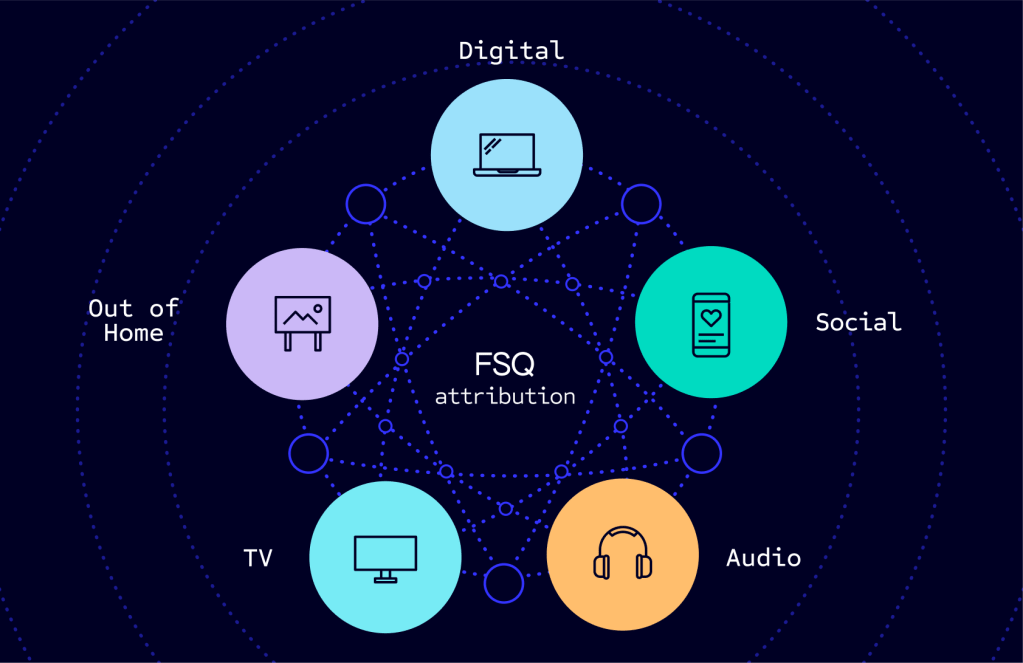
With all of the opportunities for brands to engage with consumers across both digital and physical spaces, it can be difficult to view and analyze all marketing touchpoints as a single, unified customer journey. Foursquare Attribution eliminates this complexity by providing one location for tracking the impact of omnichannel marketing touchpoints in real time and deriving granular metrics that inform highly-tailored experiences along the path to purchase.
Powered by our leading graph technology, Foursquare Attribution leverages 15B+ human-verified check-ins and 9B visits per month from 500M global unique devices to snap people to places with precision using our multi-sensor stop detection. With over 550 integration partners, Foursquare enables marketers to map out all touchpoints in an omnichannel marketing activation, including digital, TV, CTV, OOH, social, and audio, and their impact on in-store visits. This means marketers can access all media reports in one unified UI, optimize campaigns in-flight to avoid wasting ad impressions, and directly tie ad spend to real-world visits. Independent research firm Forrester found that brands using Foursquare Attribution see a 500% return on investment along with an 80% increase in incremental visits driven by each ad dollar spent.
Engage at every stage of the customer journey with Foursquare Attribution
Ready to set your campaigns apart from your competitors’? Get in touch with our team of Attribution experts for a personalized demo today. See firsthand how Foursquare’s market-leading Attribution solution delivers real-time insights into the consumer journey, enabling optimized in-flight ad spending.
Speak to a location technology expert today.
Reviewed By: Arianna Vogel
